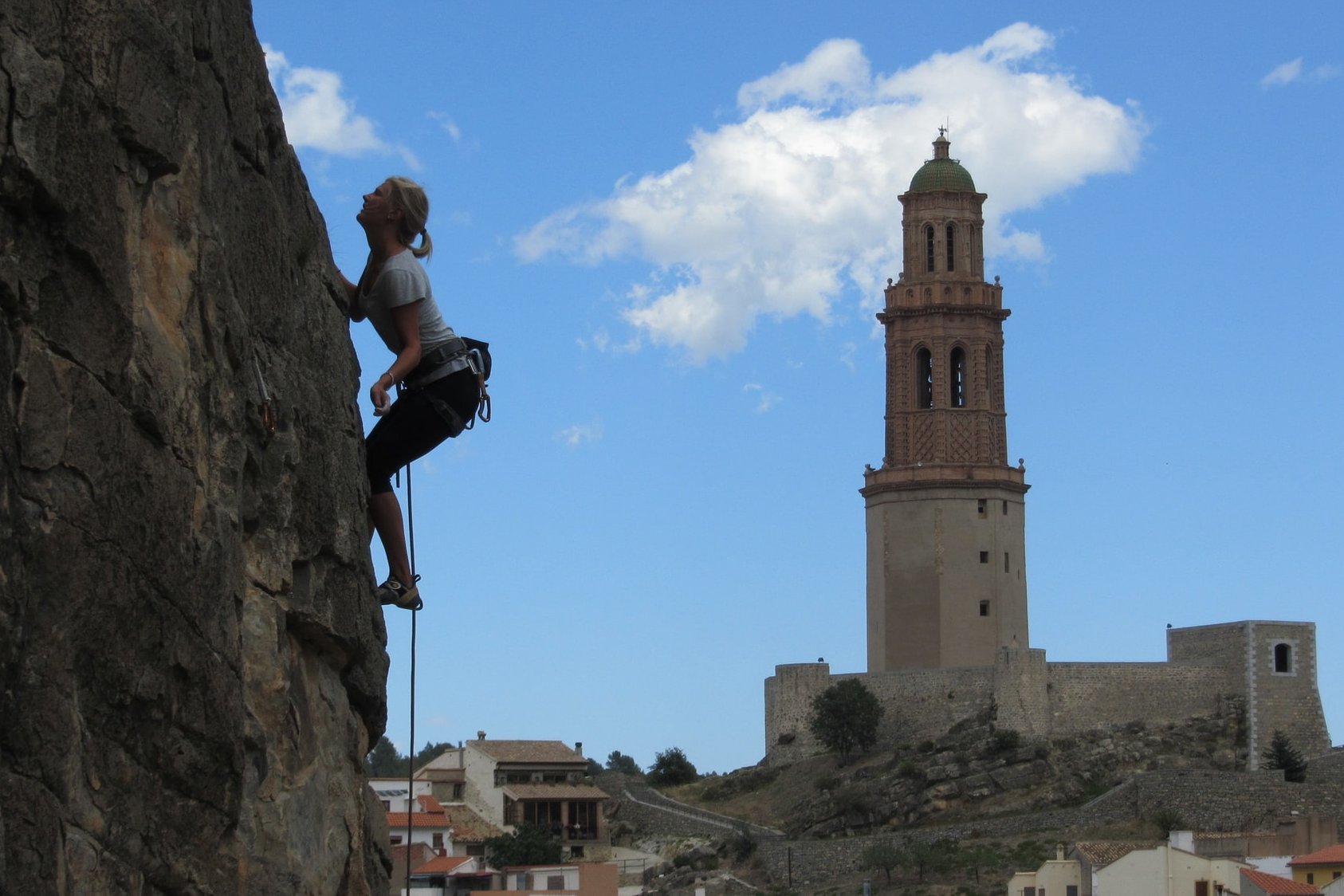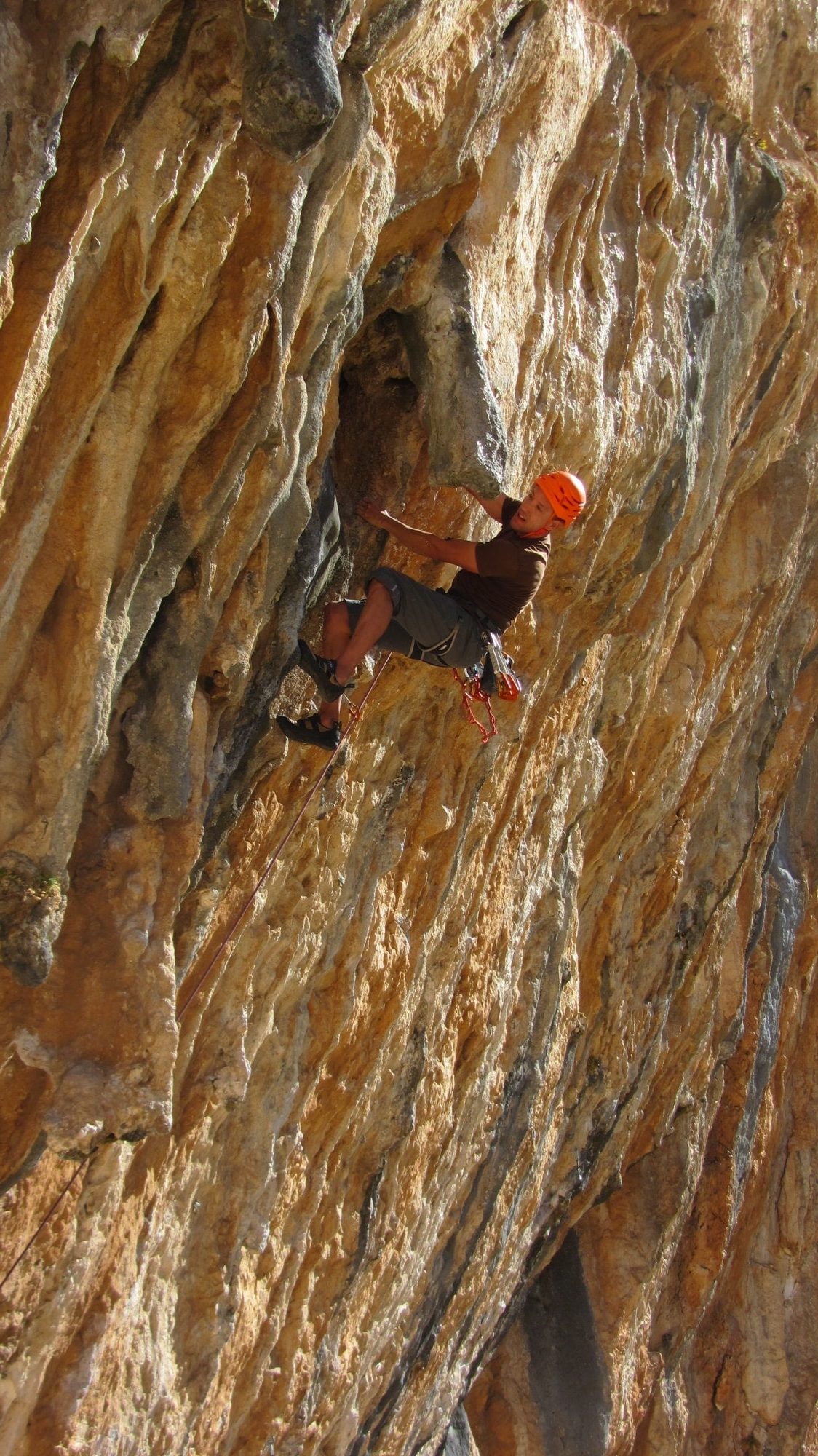
Jaén
I was lucky enough to live in Spain for five years. I learned a lot about Spanish rock, and I’d like to share some of my insights with you.
But first, my backstory: my climbing developed in parallel with a teaching career in big cities, so I was always a weekend warrior who road tripped on the holidays. Over the years, I worked my way through various obsessions: bouldering in Joshua Tree, sport in Lander, trad in Tuolumne, and so on. It wasn’t until I took a year off from teaching that I began to explore international destinations. Tonsai Beach was my first foray into three-dimensional multi-pitch sport climbing, and it was fantastic.
But Europe was still terra incognita for me. I’d heard about Siurana and El Chorro, so eventually, I took a job at an American school in Spain to see what the fuss was about. I was blown away by the diversity and abundance of climbing in the country. I spent five years cultivating a healthy addiction to Spanish limestone.
I climbed at hundreds of crags, some well-known, most not so well-known, but almost always astoundingly good and in an amazing location. I’m hardly an elite rock climber, but I’d like to share some perspectives which might be useful if you are headed to Spain. I’ll start with an overview and some logistics, touch on the famous crags, and introduce you to some lesser-known gems.
The rock type and environment
The mineral chameleon
Spanish rock takes many forms. You’ll encounter gray limestone slabs requiring careful technique on tiny smears. You’ll find vertical power-endurance routes featuring continuous, complex sequencing. When the routes go over vertical you’ll often find big moves, sinker pockets, and the occasional splitter crack. The abundant caves feature long tufa drips and free-hanging stalactites which force three-dimensional climbing. There’s something for everyone, and the diversity of forms means that routes often demand engaged problem solving and surprising body positioning.
And if that isn’t enough, you can also find conglomerate jug-hauling, sandstone pebble-pulling, and granite cracks and slabs in Spain. It just never quits!
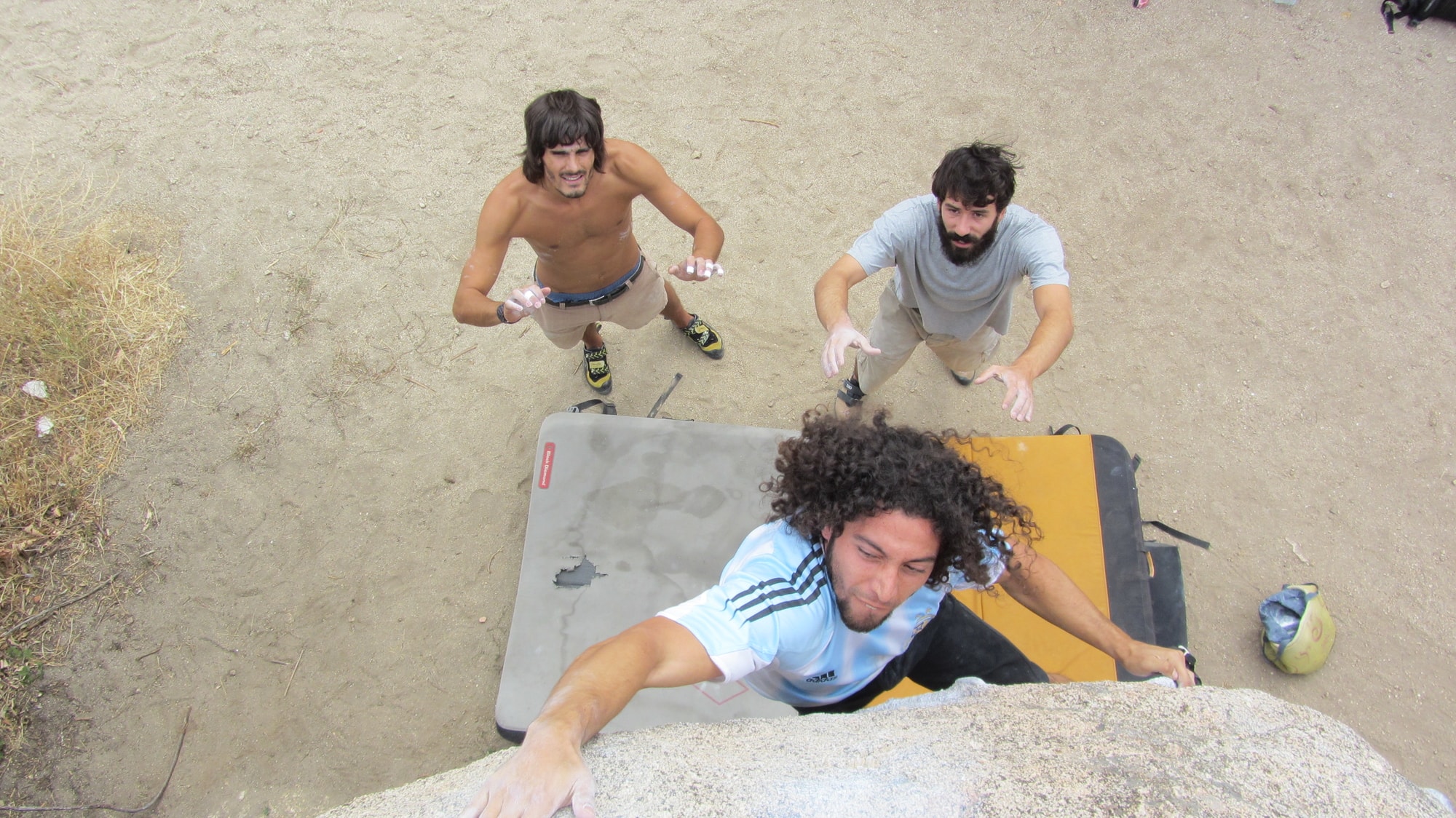
El Escorial
Pueblos, olives, and short approaches
Spain is a largely rural country decorated with Roman castles, charming pueblos, and endless terraced olive groves. Any crag you visit will probably be in a beautiful spot in the countryside, perhaps with a view of the mountains or the sea. At the same time, it is unlikely that you’ll have to walk more than 20 minutes from your car.
Style of climbing
Any kind of climbing you want, they have. The single-pitch sport climbing is as good as you’ve heard. It’s often tightly bolted. At larger crags, there are a few old school cliffs that can have some runouts and might be a bit sandbagged, but nothing too crazy in my opinion.
There is also spectacular multi-pitch sport climbing. Anchors are usually bolted and bomber. You can find great traditional climbing as well, both on limestone and on granite, again, often with bolted anchors. There is even a sandstone bouldering area in the enchanted forests near Teruel, along with endless granite boulders and a wonderland of multi-pitch domes near Madrid, and deep water soloing on the Mediterranean coast, as well as the island of Mallorca.
There is climbing almost everywhere in Spain. There are literally thousands of crags, scattered everywhere, with dozens of new ones being developed at any moment. In the five years that I was in Spain, I witnessed the opening of a dozen new crags just in the Valencia region. If you are climbing at any given crag, there are probably 50 other spots for you to visit within an hour or two, each offering a unique experience.
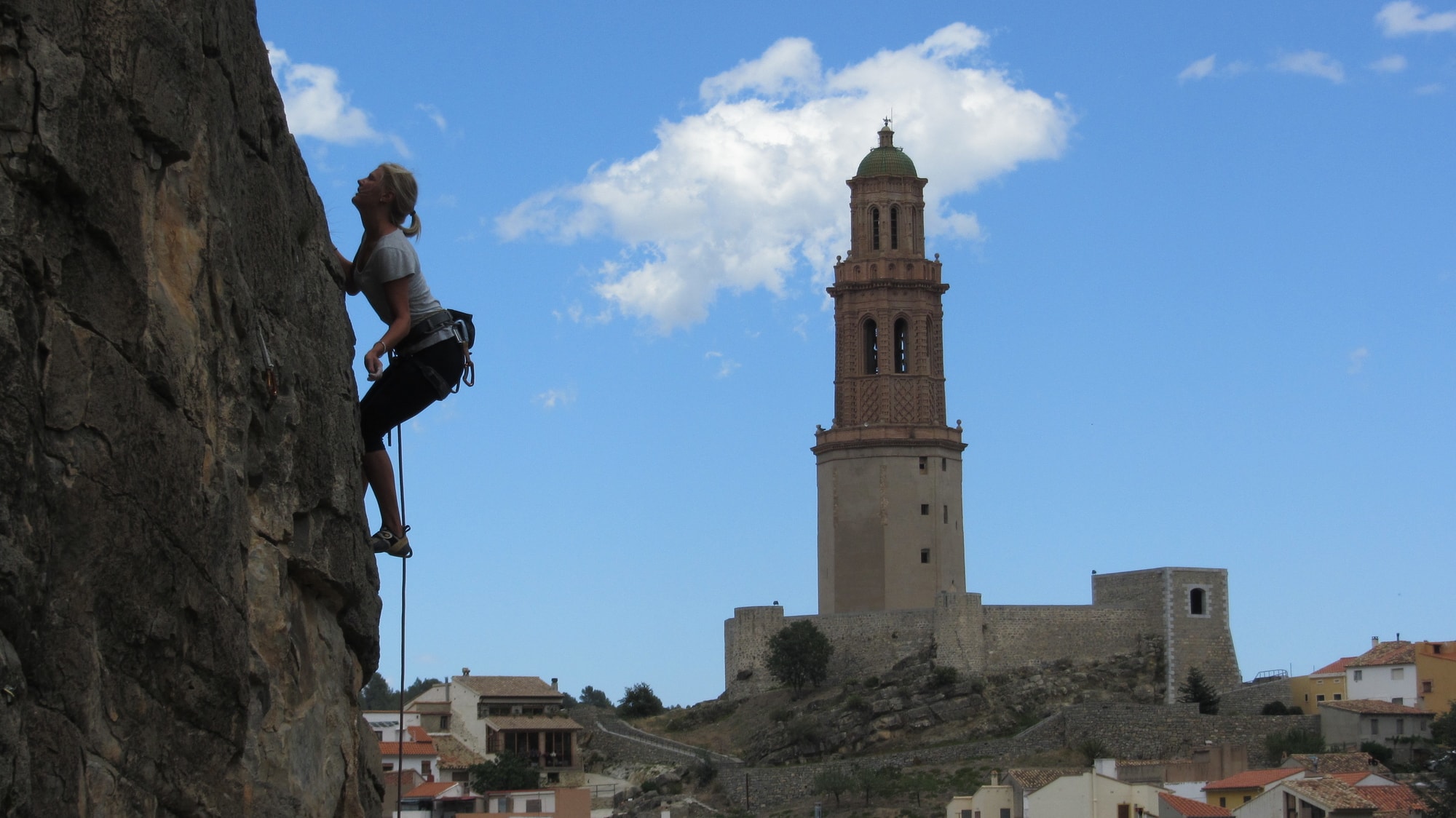
Jerica
Getting there
The planes in Spain land mainly in Barcelona and Madrid. Barcelona is the best for the Catalunya and Aragon regions. That includes Riglos, Rodellar, Lleida, Siurana and Margalef. I know that sounds like everything you could ever ask for, and it is. But Spain offers even more. It is the land of ten thousand crags.
Fly to Madrid for Cuenca, La Pedriza, or anything to the south or east.
Madrid and Barcelona are big urban areas built around a tourist-friendly center featuring charming squares, abundant restaurants and bars, and easy public transportation. Avoid driving in these cities—it’s a waste of time and money. If you are renting a car, and you want to visit Madrid or Barcelona, do so before you rent the car at the airport, or after you drop it off.
These other cities are awesome too!
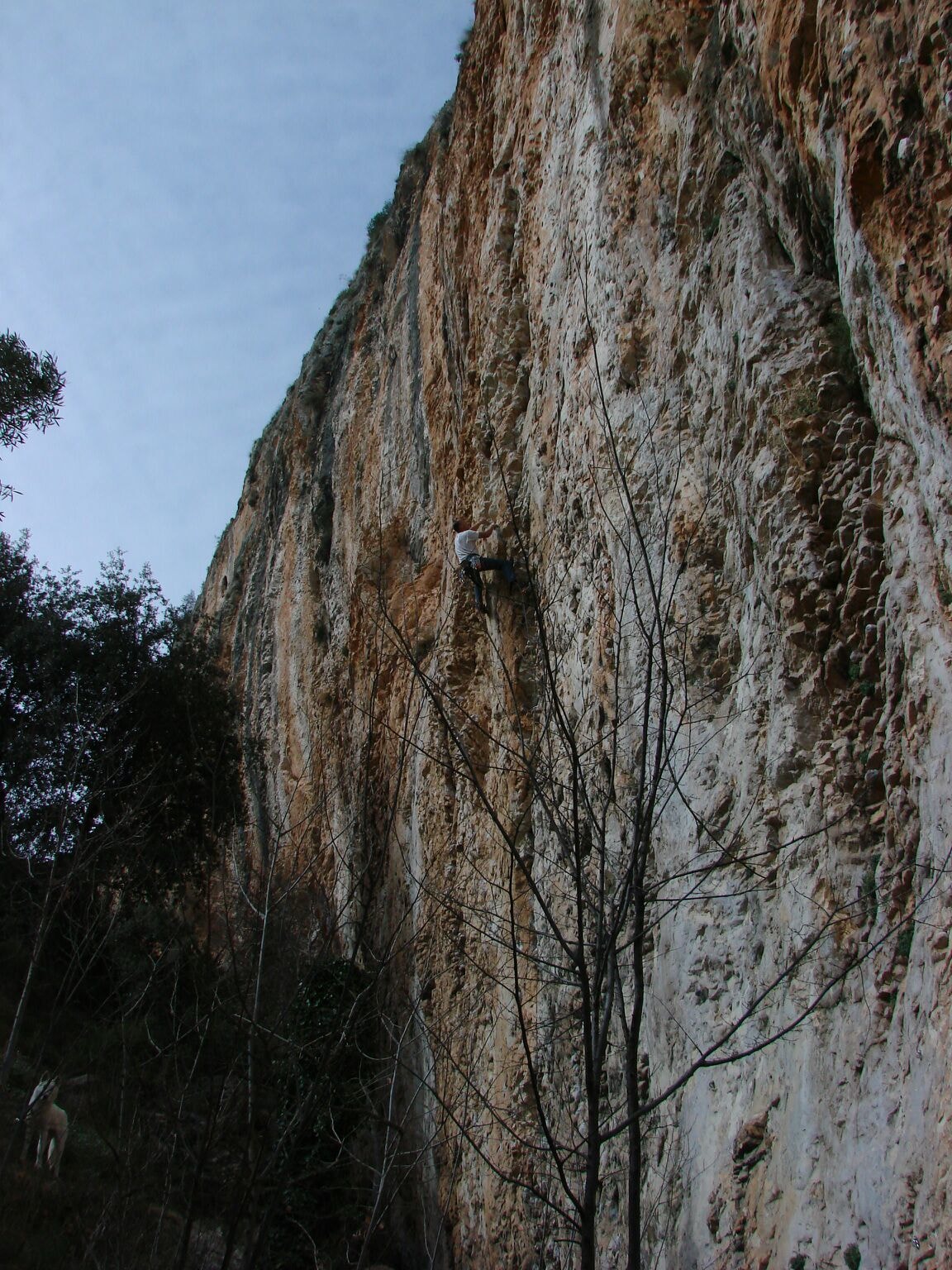
New Area in Costa Blanca
If you are heading to the south (El Chorro, Jaen) then you can consider flying to Granada. Granada is a small city with a friendly, artistic vibe, beautiful mountains nearby, and a stunningly elaborate Moorish palace called Alhambra. It’s only a five-hour drive from Madrid, but if there is an inexpensive option to fly there and if you are sure you want to be in the south, it’s a pretty great place to start your adventures.
If you are more interested in climbing along the Mediterranean (Sella, Calpe, Chulilla), you can fly to Alicante. Alicante is another small city with a lively international nightlife, a phenomenal castle, and great food. The paella and the gelato in Alicante are specialties you don’t want to miss. It’s only a four-hour drive from Madrid, but again, if you want Club Med, flying there is an option.
If you’re climbing in the north, you should probably fly to Bilbao. The food and culture in the Basque country are hearty and abundant, and the sidra (cider) and seafood in Asturias to the east are also phenomenal. There’s great surfing to be had in the north as well, and the abundant surf schools offer cheap rentals. However, the beaches are super crowded in the summer.
Airbnb is the best for visiting any city above. Airbnb offerings are cheaper than in the US, and often much cheaper than the hotels. I suggest staying close to public transport and not too far from the center.
Driving there and where to stay
Fast highways, often toll roads, make the long-distance driving quite easy, but your journey to the crag will often take you on circuitous back roads and the occasional dirt road. High clearance is almost never needed. Although it will take more time, you can get to some crags from the airports by train then bus, then stay without needing a car. To me, it’s worth renting a vehicle so you can explore more, but “no car, just camp” is an option at the famous crags.
In the US, we often have a whole slate of lodging options when you visit a climbing area. It varies in Spain. Large, historic crags often have some sort of refugio—that is, bunk-style lodging in a shared room, specifically for climbers and hikers. The popular crags now have real campgrounds to officially accommodate what for Spain is a newer trend of people tent camping near the crag.
But the vast majority of lesser-known crags have nothing more than a dirt parking lot. Nowadays, a great many Spanish and European climbers live in well-equipped vans and they roam around and camp for free everywhere. Owning a van in Spain is pretty awesome, but renting one and buying gas for it is an expensive proposition. You could rent a van if you have a group.
Traveling on a budget
If you are on a super tight budget, traveling alone, and staying in Spain for a month or two, make one of the famous crags your destination. Reserve your train or bus tickets from the airport to the town in advance, then hitch a ride with a climber to the campground or refugio. Reserve your camp spot or bed in advance too.
If you are just staying a couple weeks, renting a car might be worth the expense. In Spain, some liability insurance is automatically included in the price, and your credit card, AAA, or travel insurance might give you extra coverage if you want it. A car gives you a lot more freedom to explore, enables you to aggressively dodge weather, and avoids transit time that takes away from climbing days.
Long term travel
If you are staying a couple months and traveling with a partner or two, then things get really interesting. You could rent a car and a house.
It is pretty common in Spain for a family to have a second house, usually an apartment in the pueblo or a cabin in the mountains, that they rarely, if ever, visit. Although Airbnb has really taken off in urban areas, a lot of families have additional, furnished homes in pueblos that no one lives in. Everyone knows everyone in these pueblos, and if you can speak a little Spanish or find a friend to help you, it is actually pretty easy to walk into a bar in a pueblo and find a house to rent.
For two different summer seasons, my partner and I rented fully furnished homes close to the crags for about $430 a month. From these home bases, we visited dozens of crags. In both cases, the houses were immaculate—fully stocked with incredible views, appliances, kitchenware, and of course, olive oil. We found them by talking to people in local bars, which is a great strategy for finding similar family-owned rentals in smaller towns.
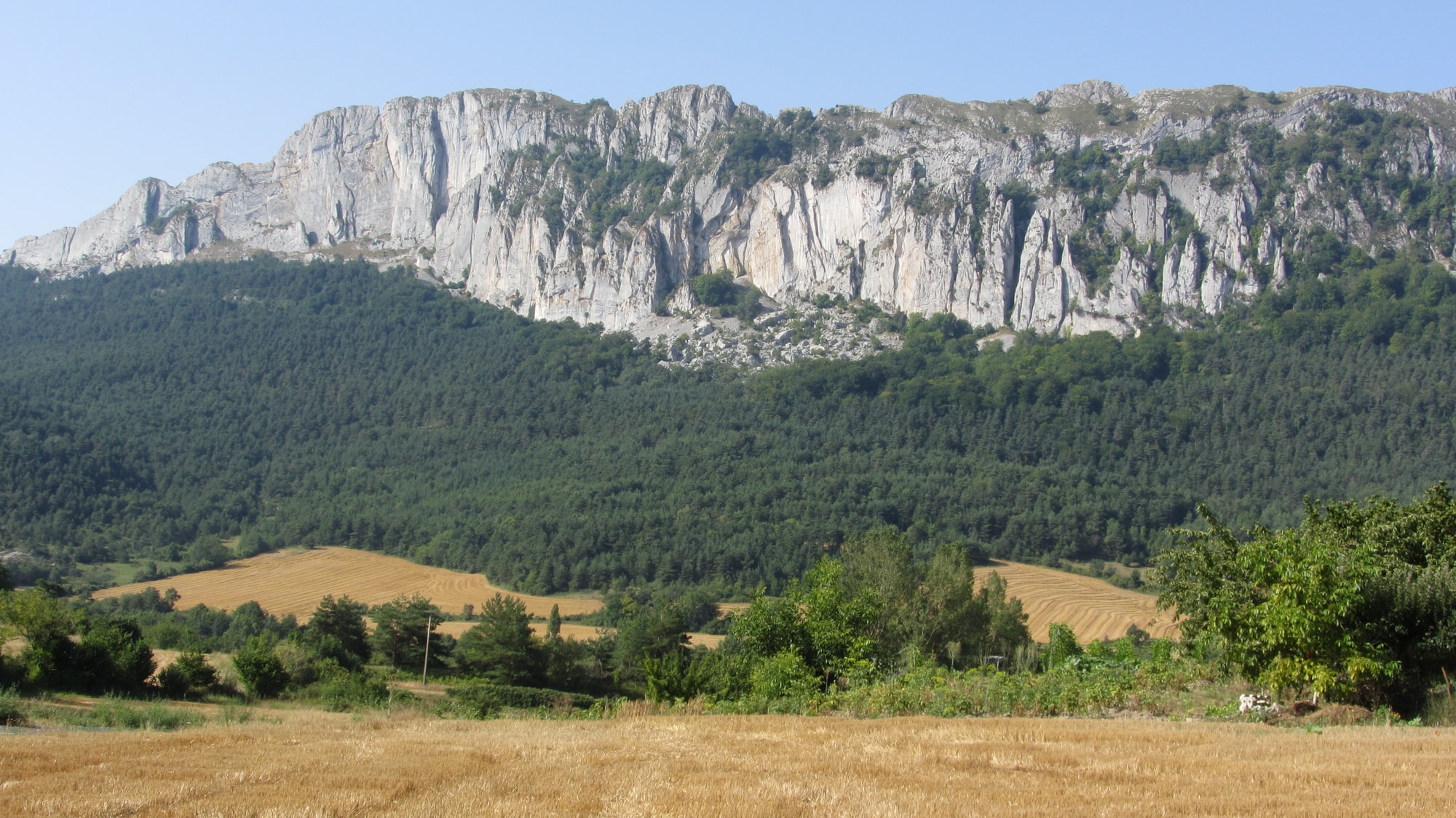
View from rented house in Corro
You can climb there year round
Spain offers fantastic climbing at any time of year. Realistically, summer rules out a lot of Spain as it gets too hot, and Winter rules out the north Atlantic and the Pyrenees, unless you want an alpine experience. So here’s where I like to go during different seasons:
Summer
Summer is a great time to visit any crag along the north Atlantic coast of Spain, or the Pyrenees. This region is a 30-mile wide strip along the coast, and then the granitic Pyrenees divide Spain and France.
Fall
Fall, in my opinion, is the best time to visit the super famous crags of the regions accessed from Barcelona, south of the Pyrenees. Weather or seepage is more of a possibility in winter and spring.
Winter
Winter is great if you are within 30 miles of the Mediterranean. That strip widens the further south you go.
Spring
Spring is great for the crags around Madrid as well as to the south and east of Madrid.
The grades
French grades can feel a little confusing because the steps between grades are bigger than in the YDS. There also is a lot of variation in published conversion scales. Actually, there is a big problem with the conversion in that the French scale steps more slowly than the YDS up to 11d, and then steps faster after that. So different conversion scales have dealt with this in different ways. Anyway, here’s how I think about it for simple reference:
| YDS (abcd) | 10a | 11a | 12a | 13a |
| French (abc with +) | 6a | 6c | 7a+ | 7c+ |
Related Post: Climbing Grades: Comparison Chart and Rating Systems Overview
The gear
I suggest an 80-meter rope and 20 draws—there are lots of long routes or extensions to routes. If you haven’t converted to belay glasses yet, belaying at steep Spanish crags all day will convert you. I recommend you get guidebooks when you are there. You’ll see suggestions for a few guidebooks, campgrounds, refugios, and gear shops in the descriptions below.
A few crag suggestions to visit
This is not meant as a definitive statement of where you should go. There are thousands of crags in Spain, and I wanted to share a few lesser known gems in addition to the known legends. With a home base and a vehicle, you can climb at 50 different crags within an hour or two.
Summer crags
The Picos de Europa are a limestone mountain range in northern Spain, very close to the Atlantic Ocean. Coastal clouds drift in from the Atlantic and often keep the mountains quite cool in summer. In addition to the famous big wall climbs of Naranjo de Bulnes (video), there are myriad other crags. There are essentially two regions here: the Basque region around Bilbao, and the Asturias region to the west. Anyway, here are a few of my favorite crags:
Poo de Cabrales, pronounced Poh, is a pretty, south-facing wall with a combination of steep face climbs and tufa hauls. There are about a hundred routes here. It’s close to a quaint small village of Las Arenas de Cabrales, which is hopping with tourists in the summer due to its proximity to Naranja de Bulnes.
Las Hermidas is less than an hour from Poo. It’s a long river canyon with climbing on either side. There are hundreds of routes here, ranging from vertical to steep caves festooned with stalactites. The variety of orientations allows for great adaptability to sun and temperature conditions. There’s a refugio in the town of the same name.
Villanueva de Valdegovia lies further east. It’s got about 100 routes but in a beautiful pastoral setting near yet another old pueblo. Temperatures are consistently moderate but it’s possible to chase shade as needed.
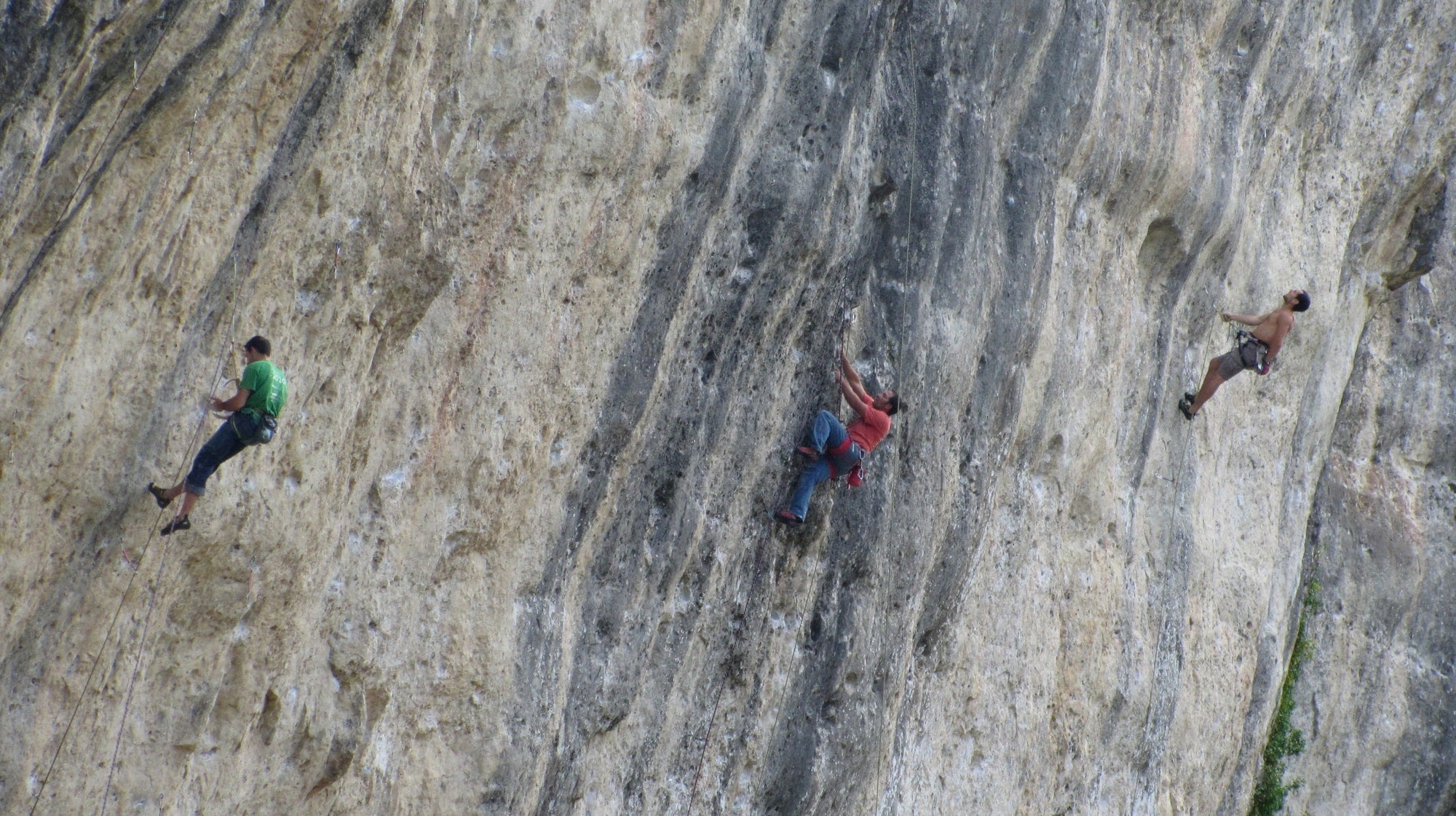
Villanueva de Valdegovia
A few other crags of note in the region: Teverga, Quiros, Ramales, Etxauri, and Matienzo. There are a couple good guidebooks to the Asturias region (and this one) and another good guide to part of the Basque region. You can also contact this climbing shop in Bilbao.
Autumn crags
I like to visit Siurana in autumn. Vast, beautiful, diverse, classic—it’s a must-visit. The village is as picturesque as can be, and the camping is convenient to the crags. Montsant is 30 minutes away and features vertical knobs and pockets in an adventurous setting. The steep pockets of Margalef are an hour away.
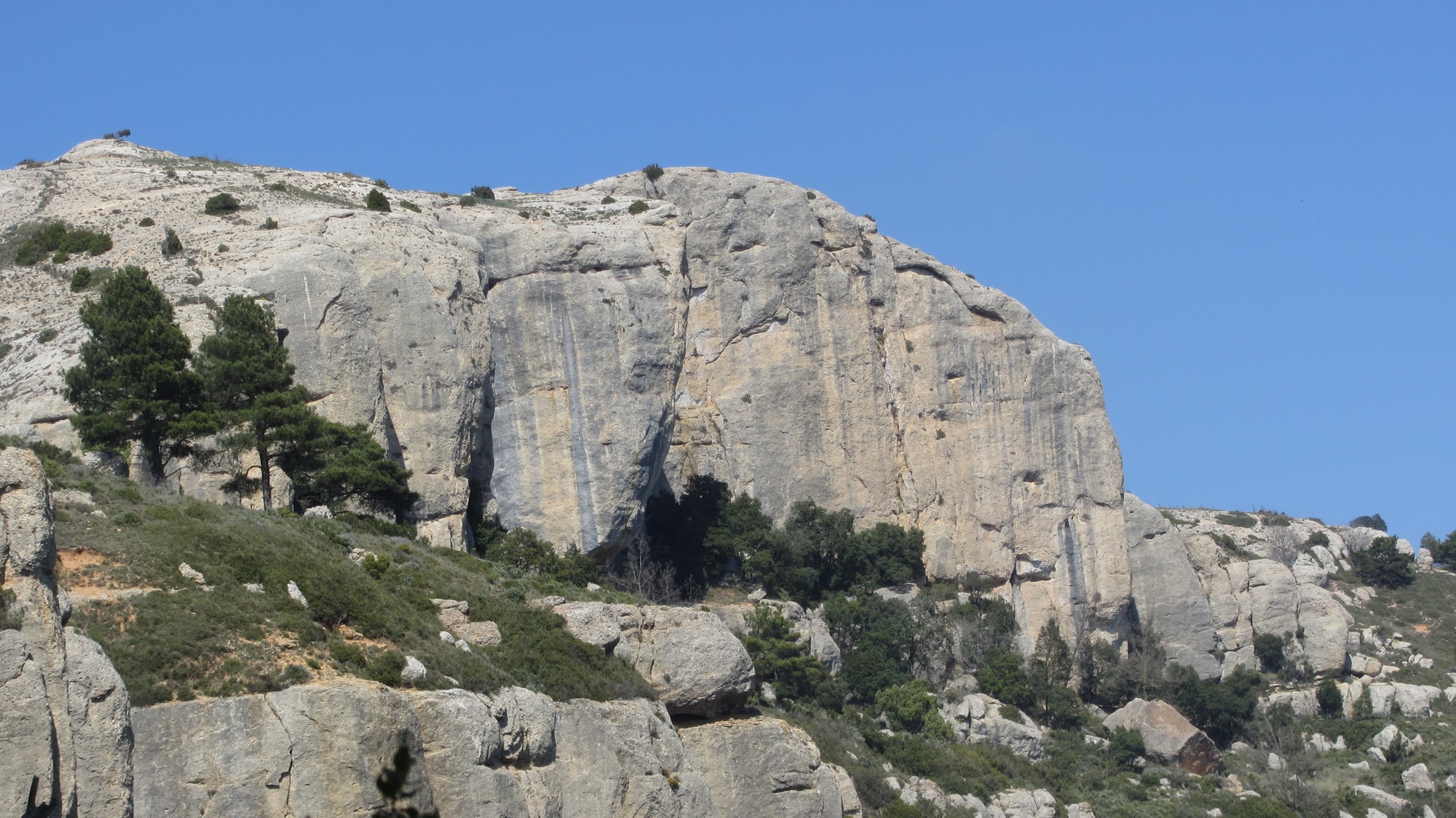
Montsant
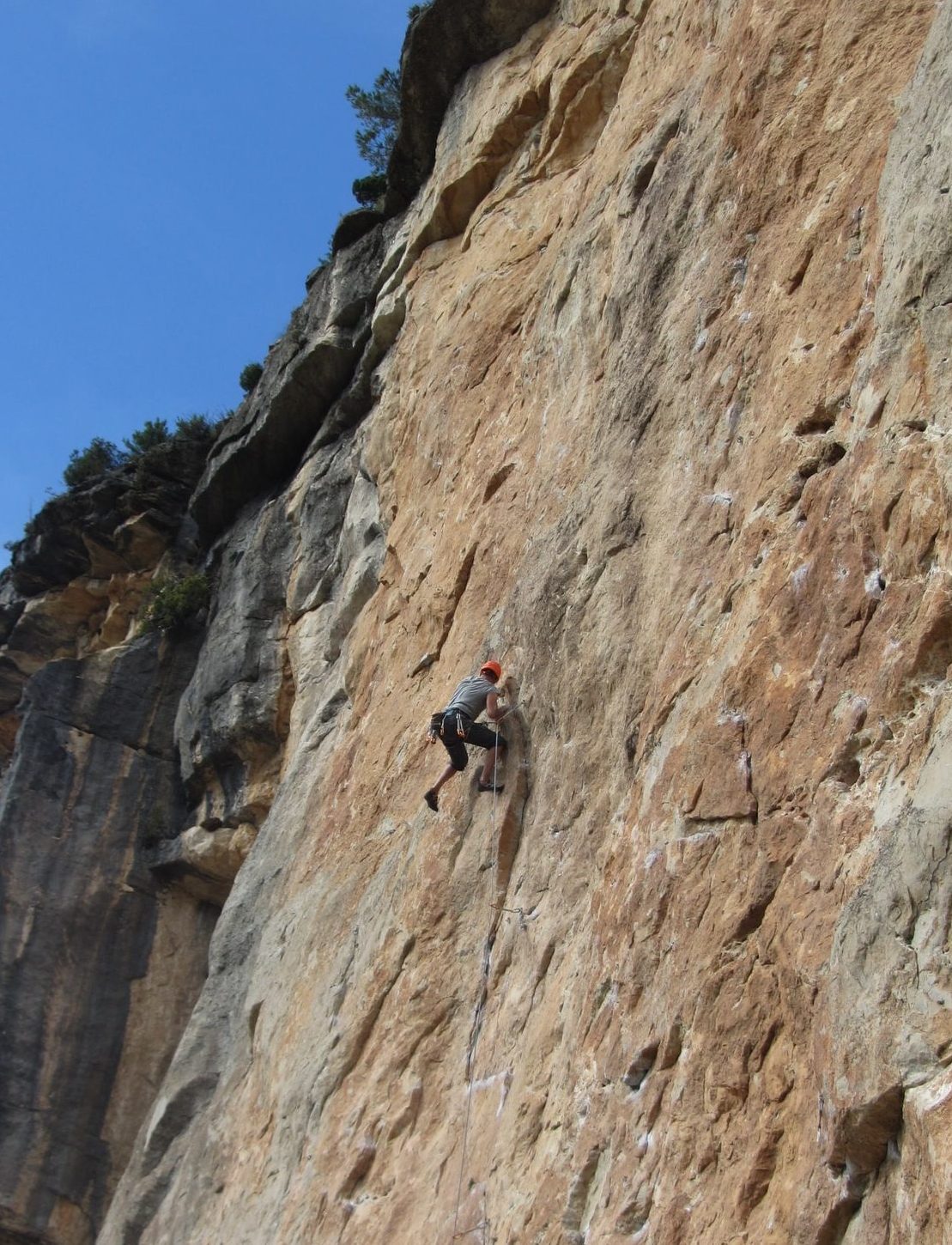
Arboli
An area gem is Arboli. Near the rustic mountain pueblo of the same name sits a vertical wall of enduro climbing on perfect southwest facing rock. An amazing restaurant and fine refugio round out the Arboli experience.
Lleida and Oliana (the provinces of Chris Sharma and Adam Ondra) are also part of the Catalunya region. Further east is the Aragon region, which includes Riglos, the land of stunning conglomerate towers rising from the green hillsides. Here you’ll find Fiesta de los Biceps, a stellar multi-pitch sport 11d, which Alex Honnold onsight soloed in 2012.
But if you’re keen to boulder, autumn is a good time to drop a bit further south and visit Albarracin. This sandstone bouldering paradise in a forest is reminiscent of Fontainebleau.
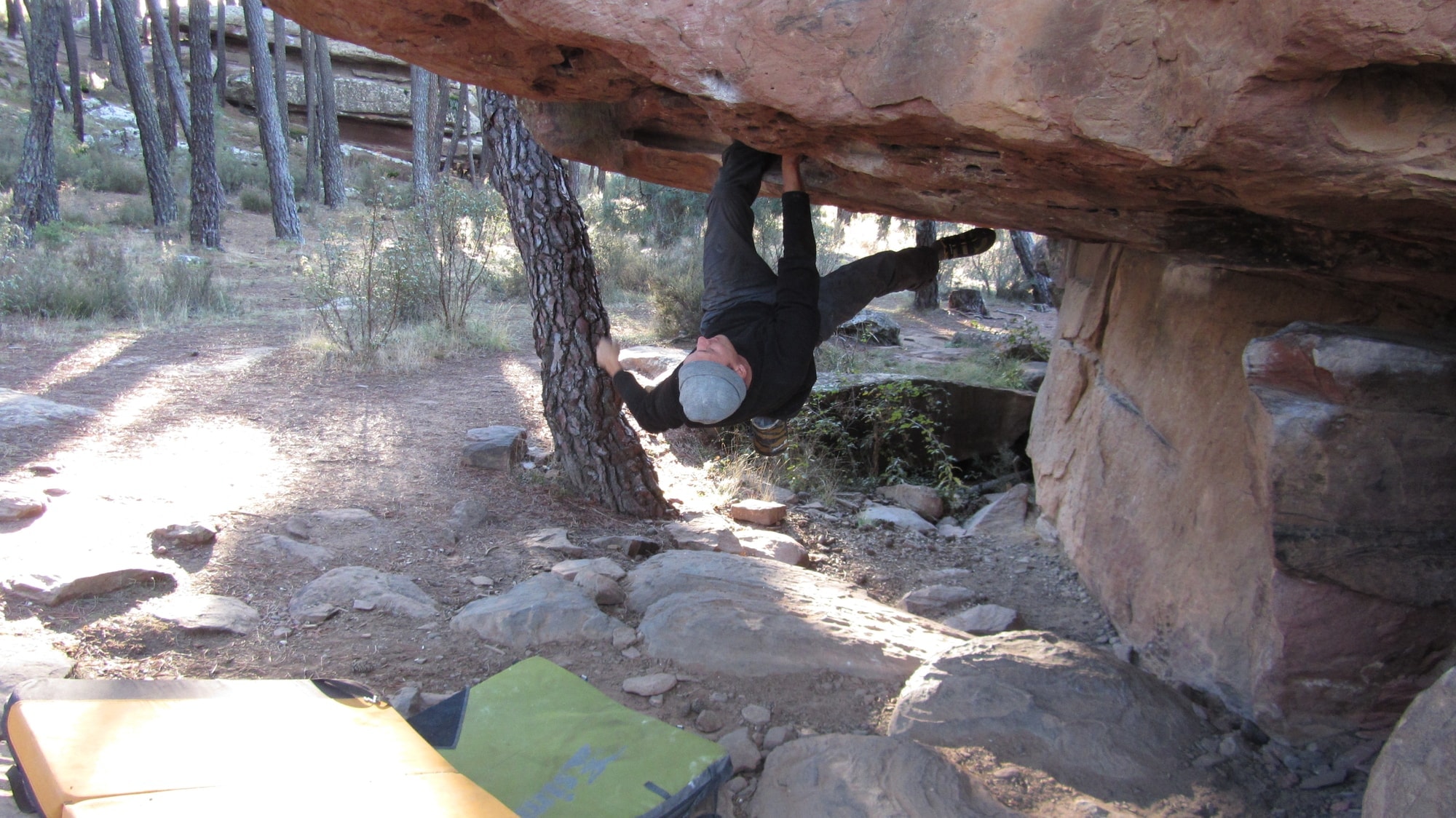
Albarracín
Winter crags
The Valencia region, and more specifically its coastal subset, known as Costa Blanca. Rockfax sells a great guidebook to the whole area, and the online guide in that link is pretty good, though it lacks photos. Costa Blanca offers consistent temperatures and dry conditions in winter and features an astounding variety of crags.
Let’s start with Penon D’Ifach, a giant limestone monolith towering over the sea. Here you can find steep and juggy multi-pitch sport routes in a stunning position, perfect on all but the coldest days. A biceps party in the sun with the best views you can imagine.
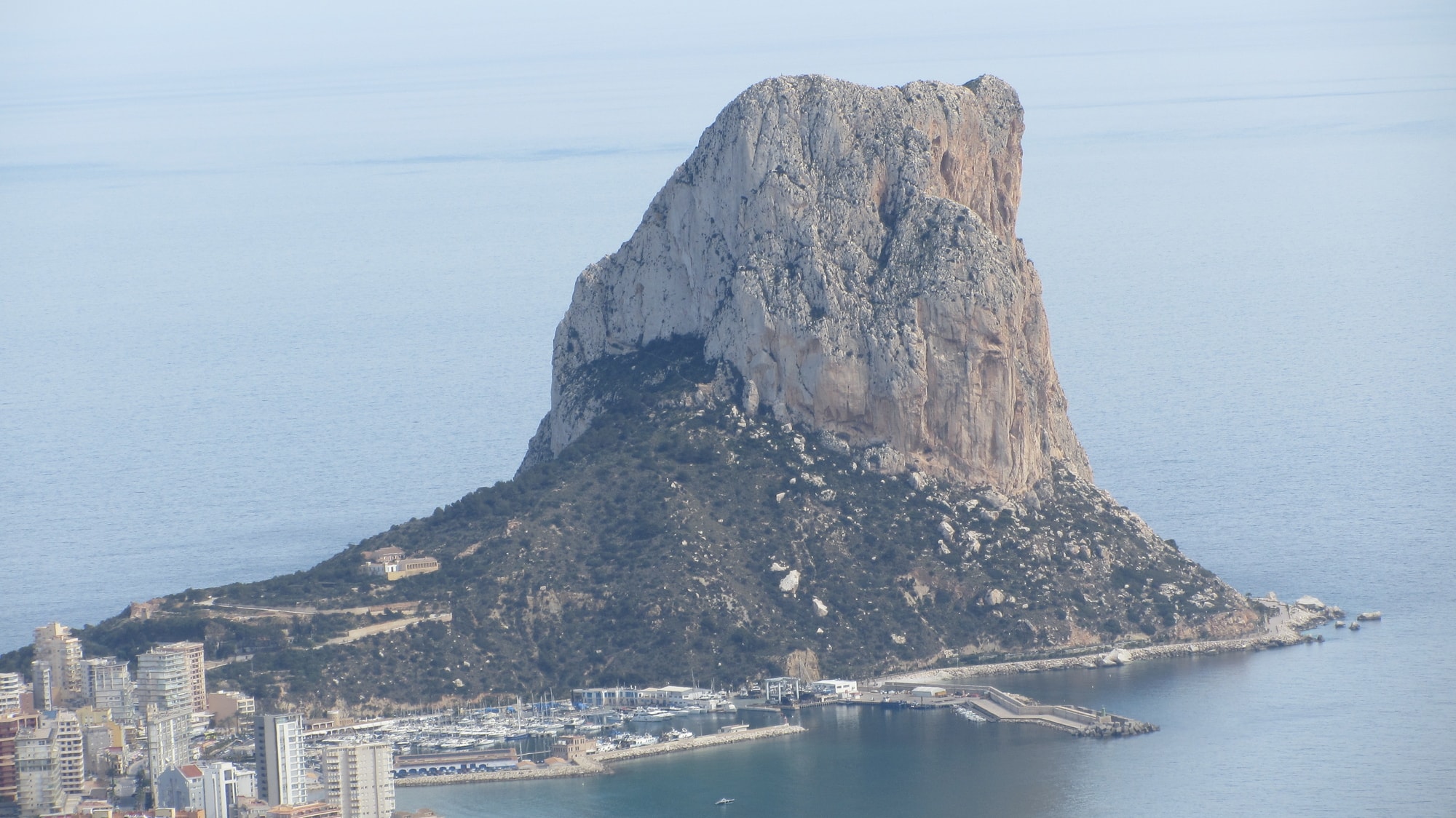
Penon d’Ifach
Slightly further south you’ll find the crags of Sella, and a particular wall, known as the Wild Side. On a warm winter day, this is the perfect steep and hard tufa wall to visit. The myriad other cliffs of Sella offer sunny slabs, spicy vertical walls, and backcountry adventures. There’s a refugio, too but it’s neither in the town nor walking distance to the crags. The town of Sella is cute as heck, and there are places to stay in town.
Costa Blanca also offers phenomenal traditional climbing adventures on Puig Campana. This 4600-foot mountain is often visible from the beach, collecting lenticular clouds on its summit. There are 2000-foot-long routes on this limestone peak. The routes are often partially bolted but usually require a rack. Amazingly, the 1-hour approach dissuades most climbers, and yet the routes are quite good. The best rock is on the south-facing Via Julia Pillar, which you can identify from miles away.
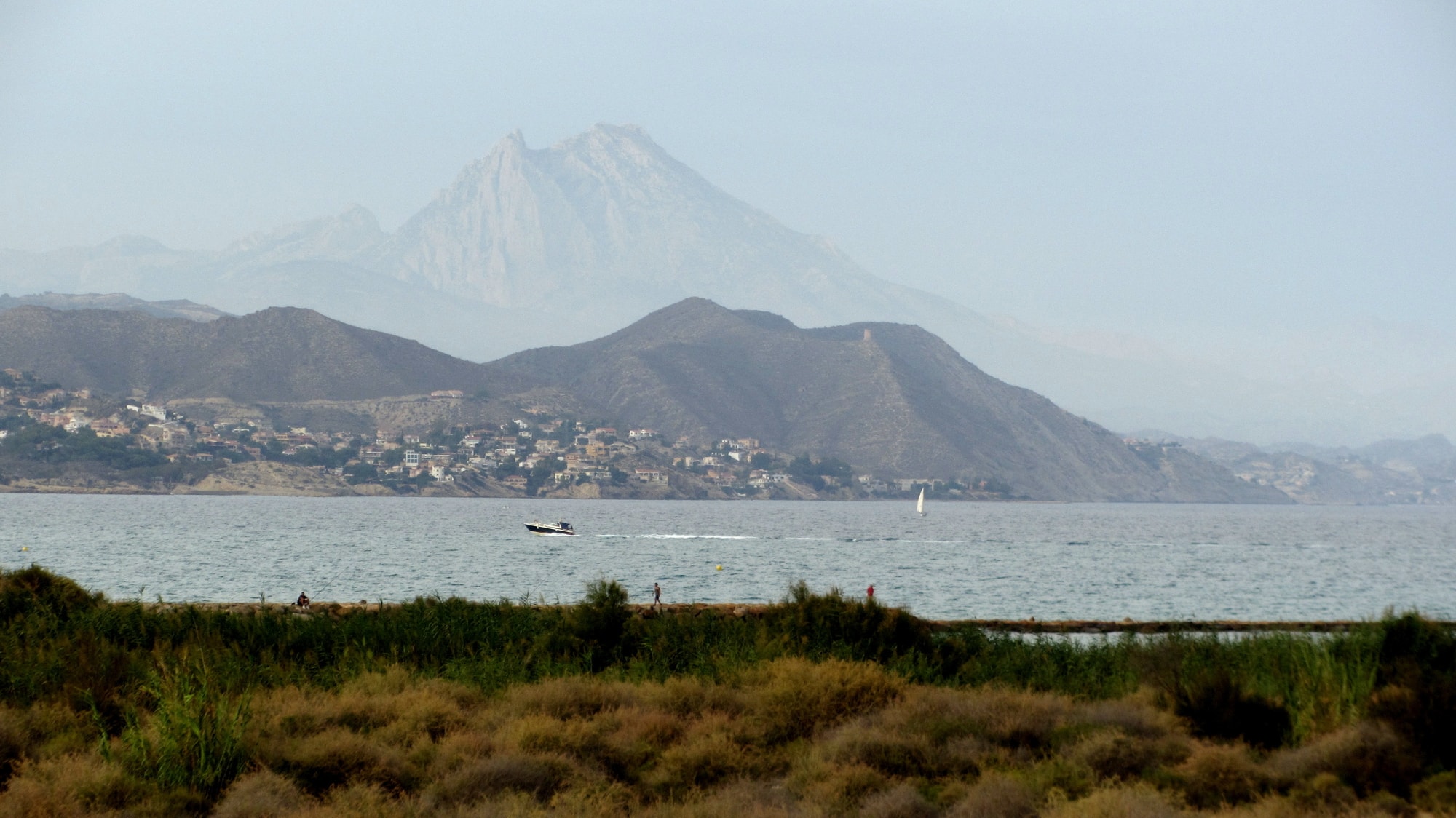
Puig Campana
There are so many crags in Costa Blanca. The guidebook doesn’t even touch half of them, but it does include the phenomenal, north-facing Cabezon d’Or, featuring more long and steep tufa routes.
Chulilla, further north, is Valencia’s answer to Siurana, featuring vertical to slightly over-vertical face climbing in a beautiful canyon setting about an hour inland. There are hundreds of power-endurance routes here, with sun and shade options.
Montanejos is a historically significant area with trad big walls, clean limestone cracks, and bolted caves. The variety of climbs and the rugged forested river valley setting are astounding. It’s colder here. There is a refugio.
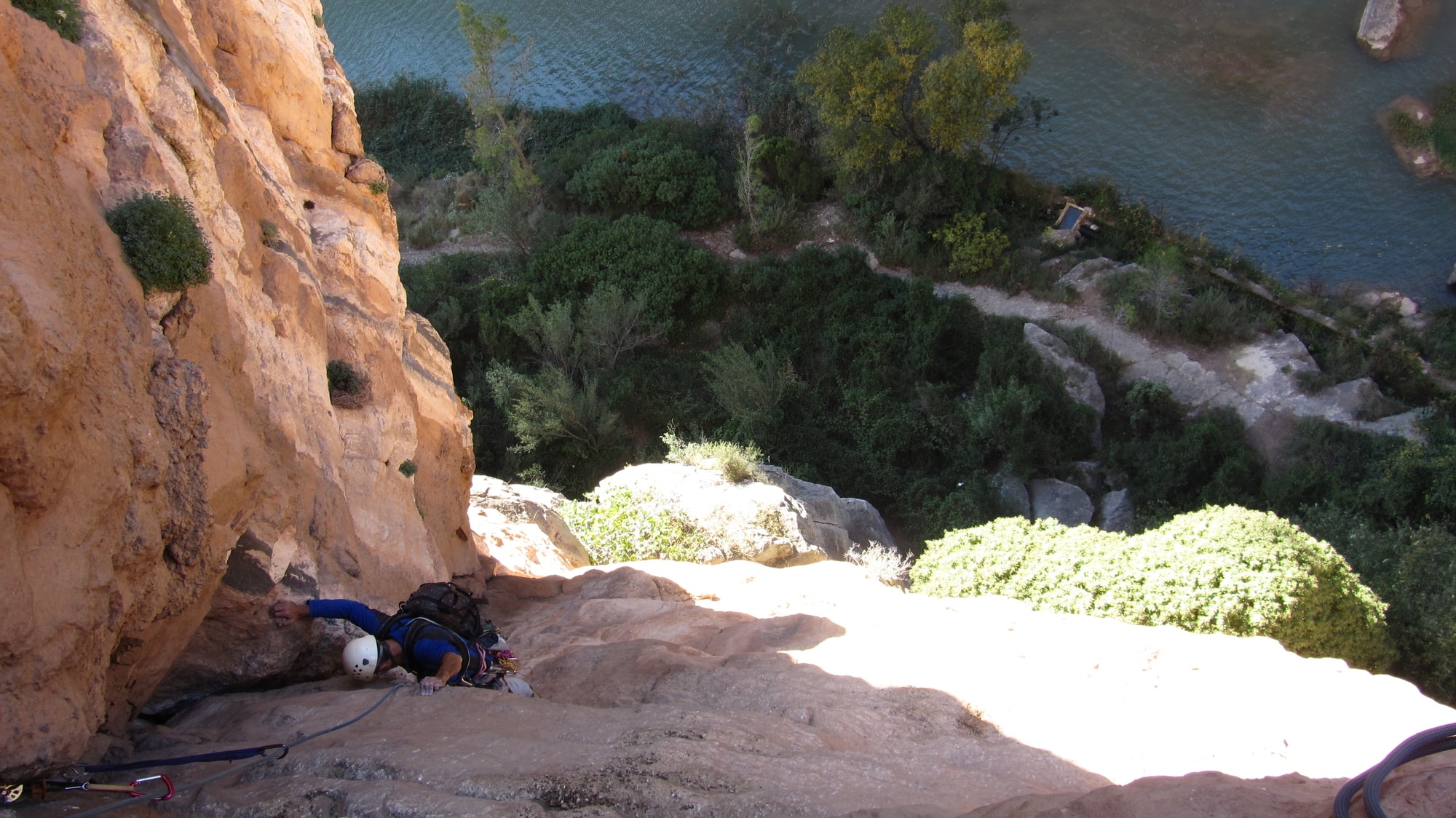
Multi-pitch trad in Montanejos.
El Chorro, much further south, is a world-famous winter climbing destination, but the crowds and the polish usually kept me in Costa Blanca. It’s still great though, and I’m sure there are plenty of secrets to be discovered there.
Spring crags
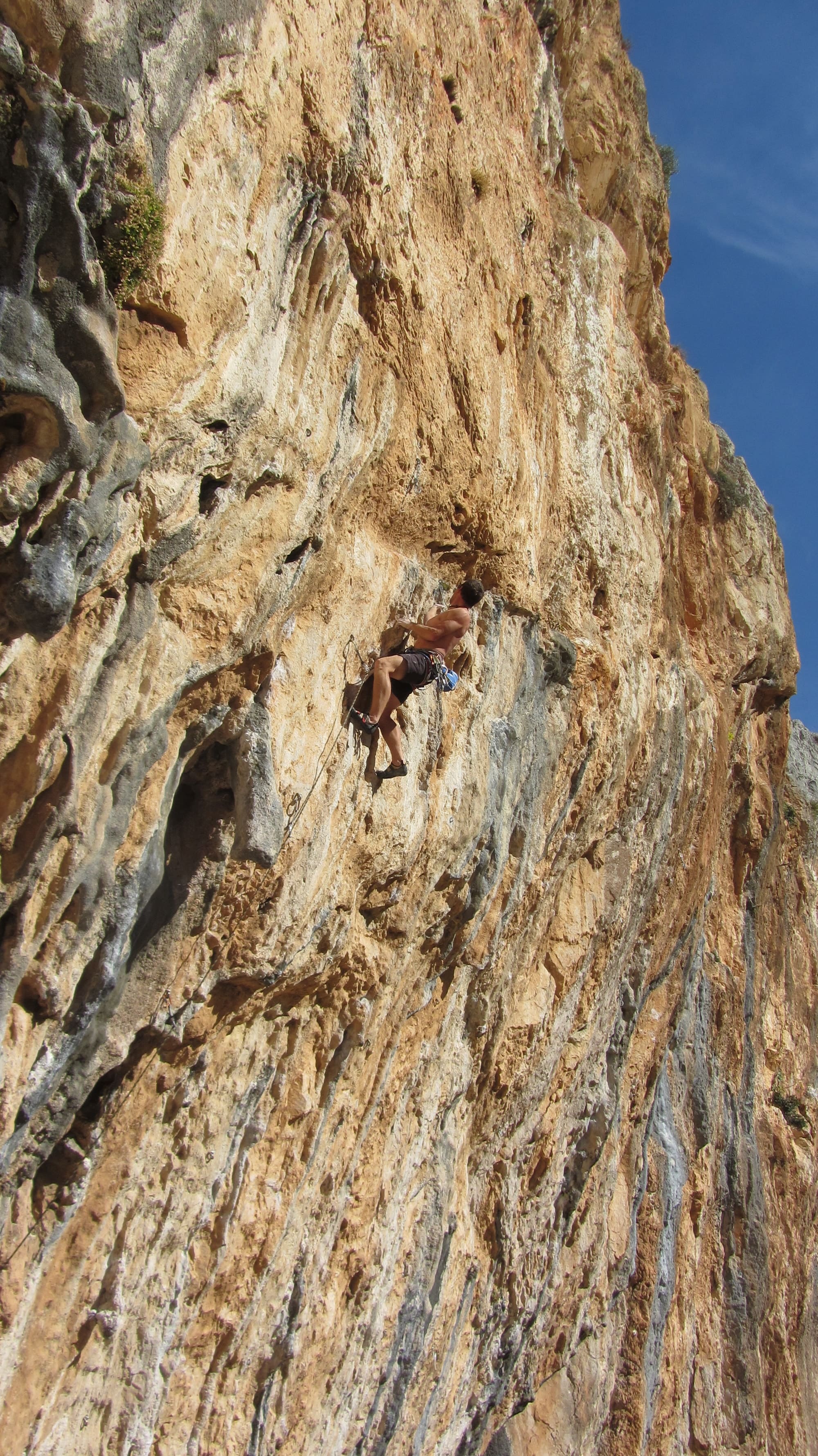
Jaén
Many of the fall and winter crags are also great in spring, but seepage can be an issue in the rainier Catalunya and Aragon regions. Instead, I think the spring is a good time to visit the interior of the country.
Jaen is a charming small city in the southern center of Spain. It is surrounded by endless rolling hills covered in olive groves. The south facing crag of Reguchillo sits 10 minutes away, and in early spring, conditions are often perfect. This tufa-strewn wall offers hundreds of vertical to steeply overhung routes along its several miles in length. There is a local gear shop called Alma Guia in town where you should be able to get the local guidebook.
La Pedriza also makes for an excellent spring adventure. It’s a granite dome-land near Madrid. Sometimes it can be a bit windy, and the terrain is super complex. If that sounds like Joshua Tree, you’re right—the runouts are often similar! But climbing multi-pitch slabs on the summit dome called Yelmo is quite lovely, and there’s good bouldering too.
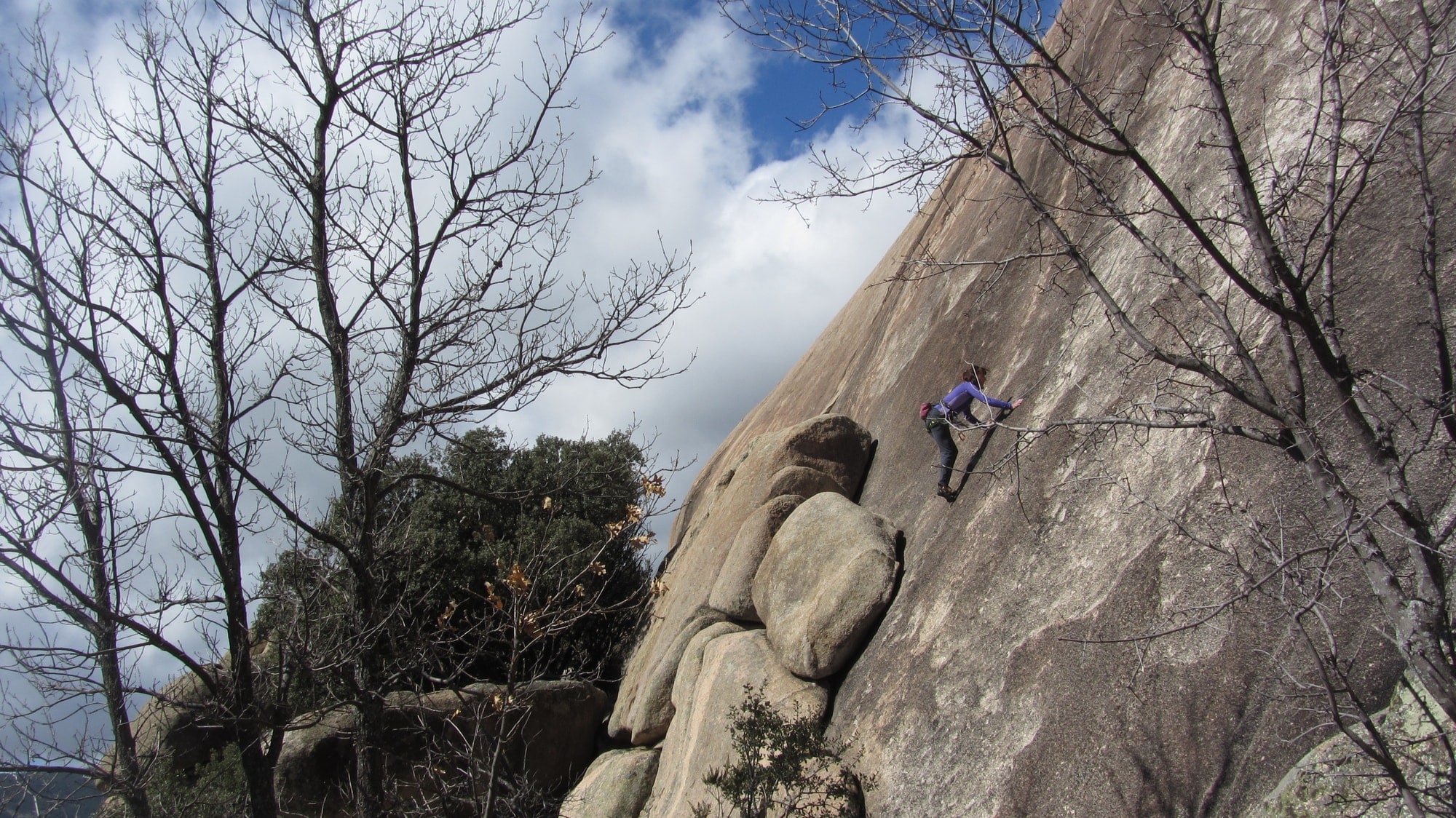
La Pedriza
Cuenca is an hour and a half to the east of Madrid. Here’s a description in English—just scroll down, then click around for pictures. Awesome place. This utterly charming town is bisected by a lovely, meandering river, with climbing on cliffs rising through the trees on either side. From the abundant pullouts, you’ll walk maybe five minutes to your cliff. Adam Ondra famously tried to onsight 14d here. What a beautiful place! Buy the guide here. Here’s a gear store.
The rest of the crags
I left out almost ten thousand other destinations, and that makes me happy. Because you’ll go to Spain and discover your dream crag, the one that’s not in any guidebook, but rather the one your new Spanish friend takes you to. You’ll get to do a second ascent, or maybe even a first ascent, in which case you’ll get to name the route. The name will be painted on a river stone, varnished, and glued to the base of the route—as is often the custom in Spain. So, I encourage you to not only visit the many meccas of this beautiful country, but also to branch out and adventure with the locals. Practice your Spanish for a month beforehand, and go visit a few more of the ten thousand crags of Spain.
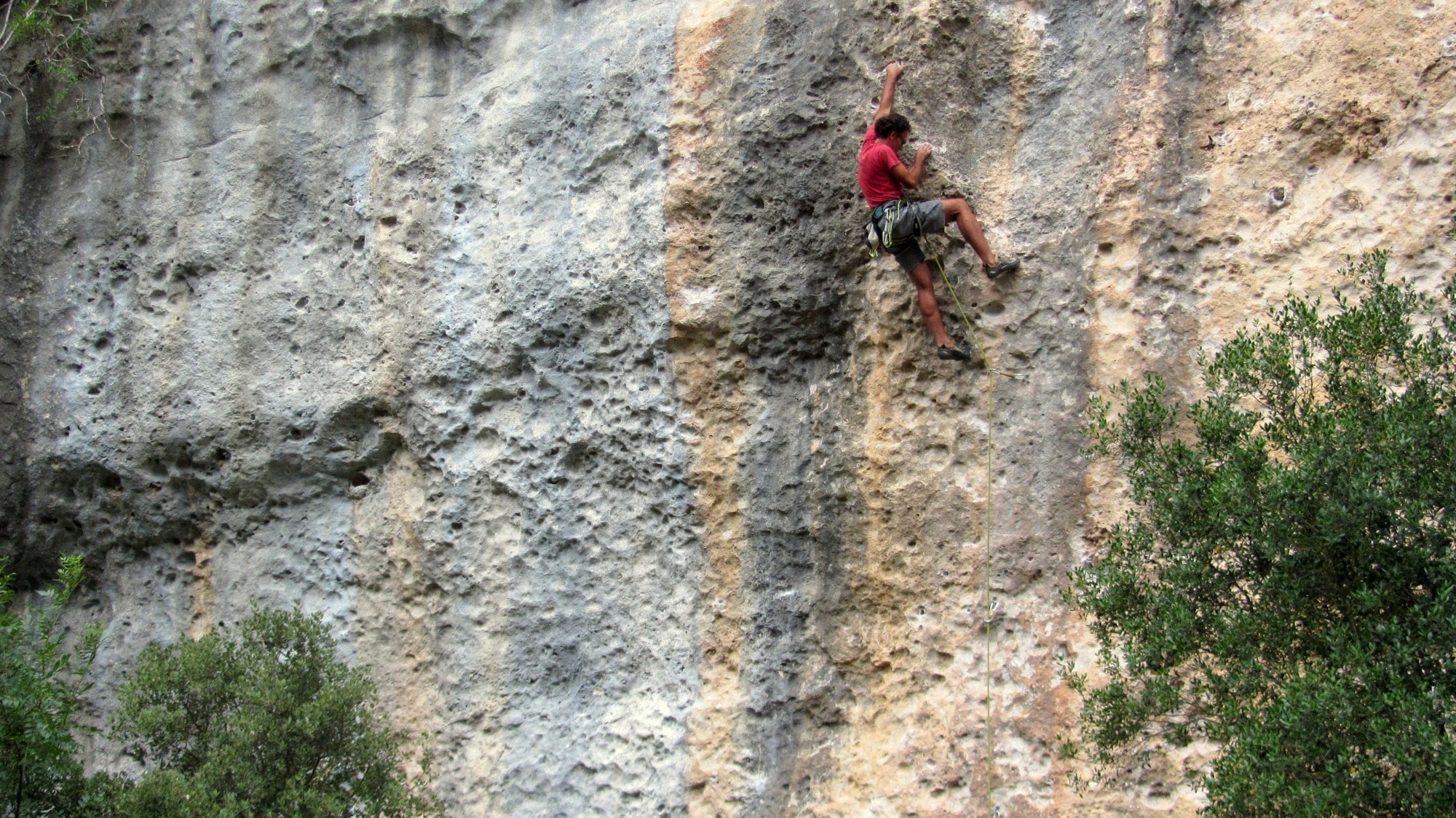
Villanueva de Valdegovia
Want more climbing content? Get our awesome climbing newsletter, delivered weekly.
Explore more
- Our 30+ most popular articles ever
- Today’s Best Rock Climbing Gear Deals
- 200+ rock climbing videos
- What’s In Your Pack: Jonathan Siegrist on His Projects, Climbing in Spain, and Gear Tips
- Video: Chris Sharma Deep Water Soloing in Mallorca, Spain
- Solo Travel and Climbing: How to Maximize Your Time on Rock When Traveling Alone
- Video: Anna Stohr and Edu Marin Climb Northern Spain’s Fiesta de Los Biceps
- Gear Guide: Sport Climbing Essentials
- Video: Chris Sharma and Paul Robinson’s Bouldering Road Trip to Alcaniz, Spain
- A Rock Climber’s Guide to Ha Long Bay, Vietnam
- Video: Chris Sharma Projecting Multi-Pitch 5.14d in Mont Rebei, Spain
- Video: Dani Andrada and Edu Marin Climb Chilam Bilam (5.15b)
- Get daily updates by Liking us on Facebook
- Free rock climbing PDFs on technique, training, knots, and more

